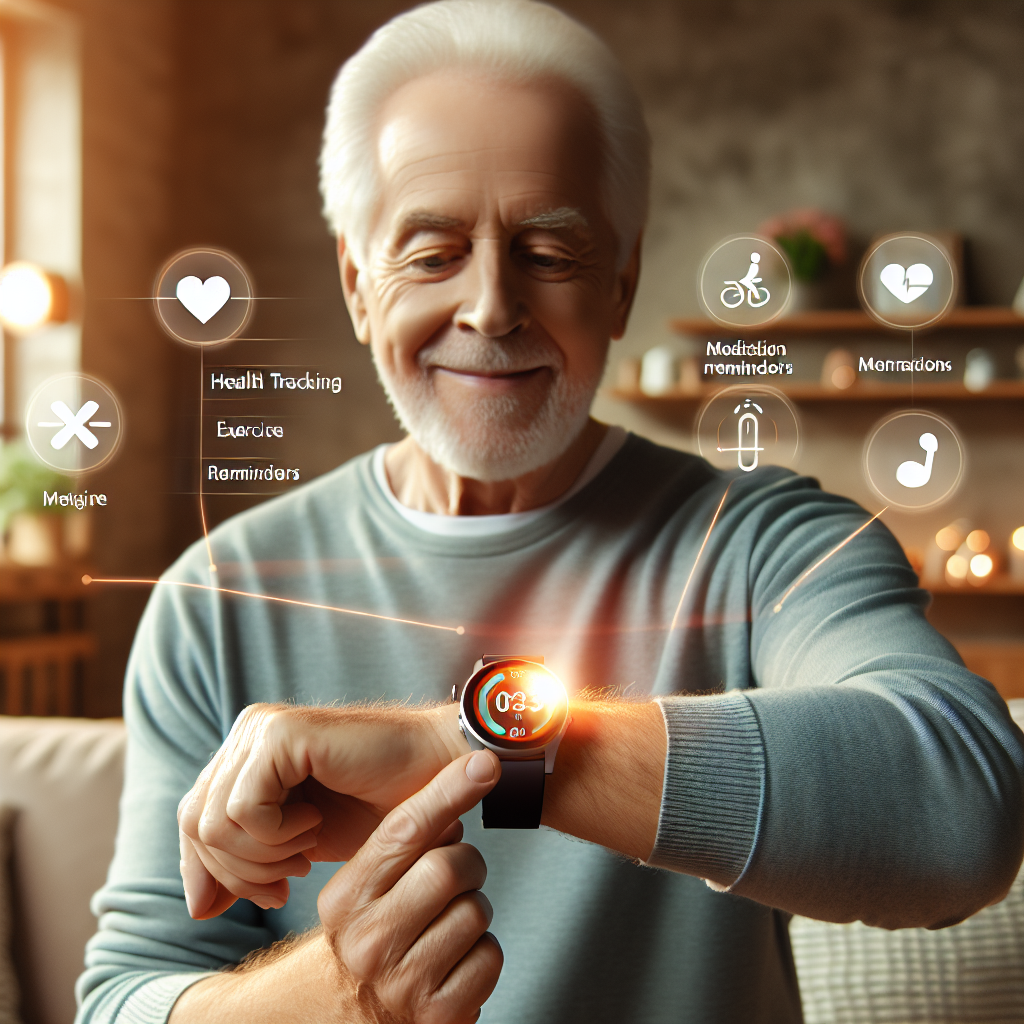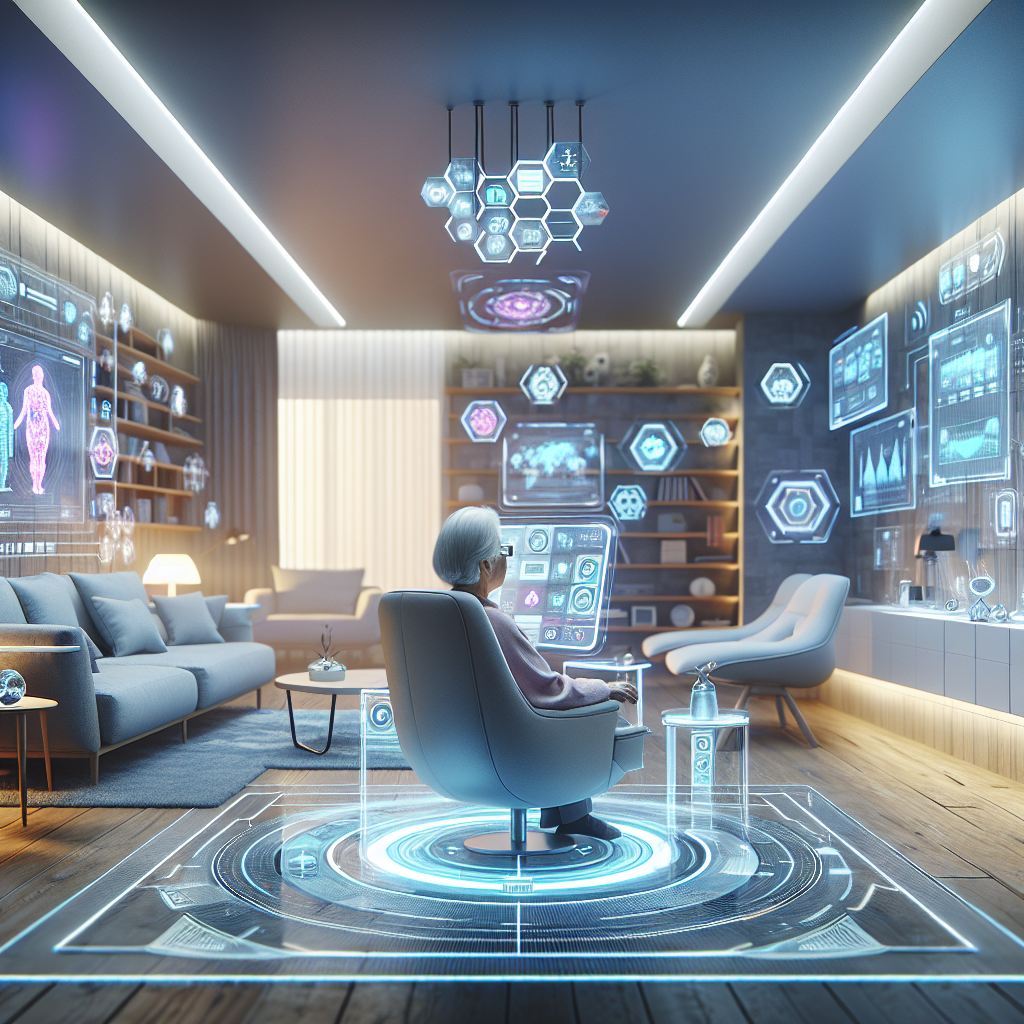Embracing Technology in Retirement
Remember when the word “retirement” meant slowing down? Those days are fading fast as AI health monitoring is changing the game for seniors like never before!
Today’s tech isn’t just for the young—it’s becoming an essential companion for active older adults who want to stay independent longer. At its heart, AI-driven health monitoring is transforming retirement life by offering something truly special: peace of mind with a side of freedom.
These smart systems aren’t just cold, complicated gadgets. They’re more like helpful friends who quietly keep watch while you go about living your best life at home. Whether it’s tracking your heart rate during morning yoga or making sure you haven’t missed any medications, these technologies blend into the background of your day while providing powerful protection.
Aging in Place with AI
What makes this approach to aging in place so effective is how it combines time-tested wisdom with gentle innovation. As we at SilverSmart often say, the journey of positive aging doesn’t mean abandoning tradition—it means enhancing it with thoughtful technology that respects your independence.
For many active seniors planning for retirement, these AI companions are becoming as essential as a good book or comfortable shoes. They support the little things that make aging at home not just possible but truly enjoyable. By bridging the gap between self-reliance and safety, AI monitoring is helping rewrite what retirement life looks like for a new generation of tech-savvy seniors who aren’t ready to slow down—they’re ready to thrive.
5 Game-Changing Ways AI Health Monitoring Supports Independent Living
How AI Enhances Independence
Let’s explore five remarkable ways AI health monitoring is helping seniors live their best retirement life while maintaining their cherished independence.
1. Around-the-Clock Health Guardian
Remember taking your own pulse or waiting for doctor’s appointments to check your blood pressure? Those days are fading fast! Today’s AI-powered wearables continuously track vital signs like heart rate, blood pressure, and oxygen levels without any fuss.
“My smartwatch detected an irregular heartbeat pattern I didn’t even notice,” shares Martha, 72, an avid gardener who credits her wearable device for helping identify her atrial fibrillation early. “My doctor said catching it when we did prevented a possible stroke. Now I garden with peace of mind knowing my little wrist companion is keeping watch.”
These devices seamlessly integrate into active living routines, allowing seniors to focus on enjoying life rather than worrying about their health metrics.
2. Fall Protection That Respects Independence
Falls represent one of the biggest threats to aging in place successfully. AI technology has revolutionized fall detection with discrete sensors that can distinguish between normal movements and actual falls.
John, 78, who lives alone after losing his wife, explains, “I was resistant to having any kind of monitoring at first—it felt like giving up my privacy. But my SilverSmart pendant doesn’t watch me; it watches out for me. When I slipped in the shower last winter, help was called automatically when I couldn’t reach the phone. That technology kept me independent, not the other way around.”
These intelligent systems provide a safety net that empowers seniors to move confidently throughout their homes without the constant worry of “what if I fall?”
3. Taking Charge of Chronic Conditions
Managing chronic diseases like diabetes or hypertension becomes significantly easier with AI health monitoring. Smart medication dispensers can remind you when it’s time for your pills, while connected devices track important health metrics.
“Managing my diabetes used to consume so much mental energy,” notes Robert, 69, an enthusiastic traveler. “Now my glucose monitor connects to my phone app, which gives me trend reports and suggests when I might need to adjust my insulin. I’ve improved my A1C numbers and feel confident enough to take those cross-country road trips I’ve always dreamed about.”
By streamlining disease management, these technologies free up mental space for more fulfilling retirement activities while improving health outcomes.
4. Staying Active, Staying Young
One of the most delightful aspects of AI health companions is how they encourage and track fitness for seniors. These smart assistants can recommend age-appropriate exercises, track progress, and even make activity suggestions based on your energy levels.
“My fitness tracker has turned me into a bit of a step-count competitor,” laughs Elena, 75. “I’ve connected with other seniors in my neighborhood, and we have friendly walking challenges. Last month I averaged 7,500 steps daily—better than my daughter! The fitness tips I get keep me motivated and help me try new activities that are good for my joints.”
These personalized fitness approaches support active living and have been shown to improve sleep quality, another crucial factor in positive aging.
5. Nurturing Mental Wellbeing
Mental Wellness and Social Connection
Beyond physical health, AI companions excel at supporting mental wellness. From cognitive games that keep minds sharp to virtual assistants that facilitate video calls with grandchildren, these technologies combat isolation and foster connection.
William, 81, finds tremendous value in his AI companion’s mental wellness features: “After retirement, I noticed my memory wasn’t as sharp. My SilverSmart assistant suggests different brain games each day, and I’ve actually seen improvement in my recall. Plus, it reminds me to call my son’s family on Sundays—which keeps me connected to what matters most.”
Many seniors report that these mental wellness tools provide structure to their days while stimulating creativity and social engagement—essential components for thriving during retirement years.
The beauty of these AI health monitoring solutions is how they blend into the background of everyday life while providing powerful support. They’re not about surrendering independence—they’re about enhancing it through thoughtful technology that respects the wisdom that comes with age while addressing the unique challenges of this life stage.
The Future of Positive Aging with AI
As we look toward the future of retirement living, it’s clear that AI health monitoring isn’t just a passing trend—it’s becoming an essential part of the positive aging journey. The technologies we’ve explored represent more than clever gadgets; they’re powerful tools reshaping what it means to age in place with dignity and joy.
What’s truly remarkable is how these AI companions are breaking down the false choice between independence and safety. For too long, seniors planning for retirement faced difficult decisions: maintain complete independence with increased risk, or accept heightened security at the cost of autonomy. Today’s AI solutions elegantly bridge this gap, offering both.
Consider how dramatically retirement life has changed for those embracing these technologies. Morning might begin with an AI assistant suggesting gentle stretches based on how you slept (tracked automatically, of course). Throughout the day, subtle monitoring ensures everything from medication adherence to proper hydration, all while encouraging physical and mental activities tailored to your preferences and abilities. This isn’t intrusive surveillance—it’s compassionate companionship.
“Technology used to intimidate me,” admits Carol, 77, who recently adopted SilverSmart’s AI Companion. “Now I see it as another resource in my active living toolkit. It helps me stay connected to my grandchildren, keeps me moving with fitness tips appropriate for my arthritis, and gives my children peace of mind without them having to call three times daily to check on me!”
The implications reach far beyond individual benefits. As more seniors successfully age in place, we’re witnessing communities transform. Neighborhood walking groups organized through fitness apps, virtual book clubs for those with limited mobility, and intergenerational knowledge-sharing platforms are flourishing. The social fabric of retirement is being rewoven with technology as the loom.
Health systems are noticing too. Preventative care becomes more effective when AI monitoring catches subtle changes before they become emergencies. This proactive approach not only improves quality of life but often reduces healthcare costs—a win for everyone involved in the aging journey.
Of course, the path to embracing these technologies isn’t always straight. Many seniors initially worry about privacy concerns or fear becoming dependent on devices. That’s why SilverSmart’s philosophy of blending tradition with gentle innovation resonates so deeply. The most effective AI companions don’t replace human connection—they enhance it by removing barriers and creating new possibilities.
As we move forward, let’s reimagine retirement not as a time of limitation but as a period of liberation supported by thoughtful technology. AI health monitoring offers the promise of more birthdays celebrated at home, more hobbies pursued with confidence, and more meaningful moments shared with loved ones.
The future of aging in place looks brighter than ever—not because technology is taking over, but because it’s empowering seniors to take charge of their own vibrant, independent lives for years longer than previously possible. That’s not just good news for today’s retirees; it’s a hopeful glimpse into our own futures, where aging becomes less about decline and more about discovery, supported by companions both human and digital.

